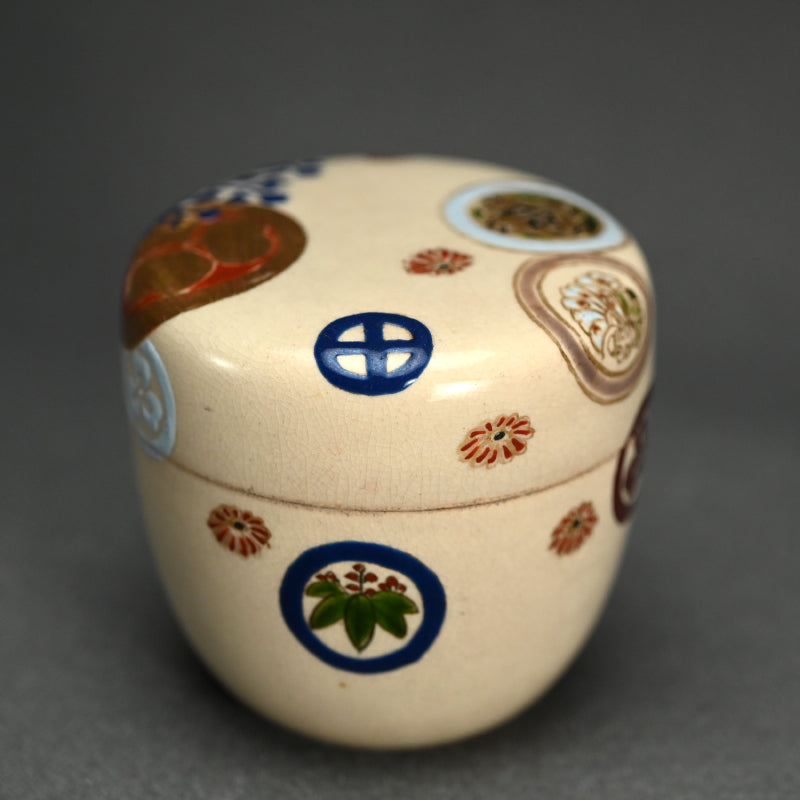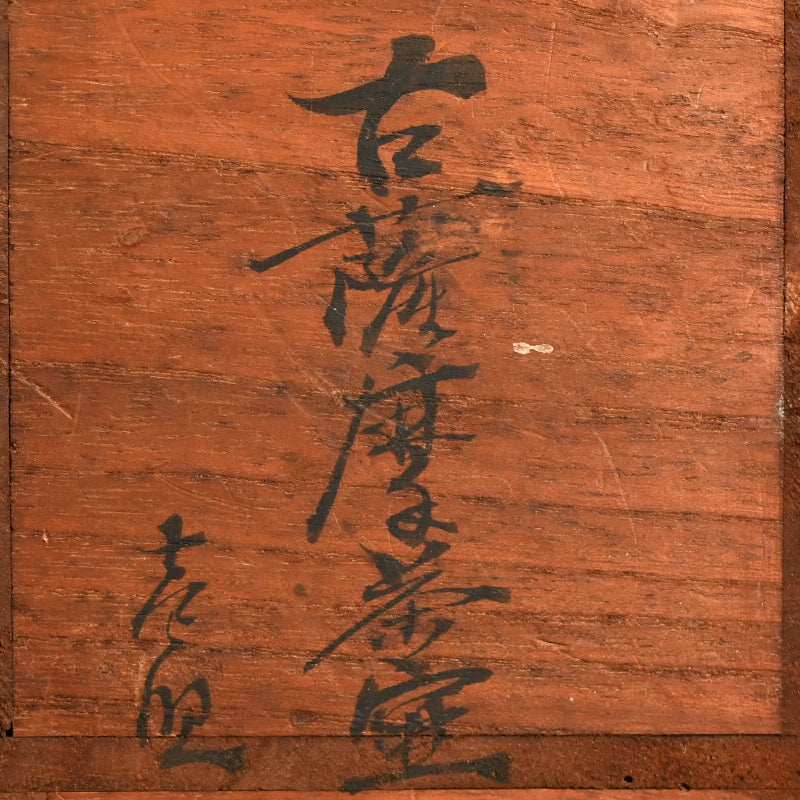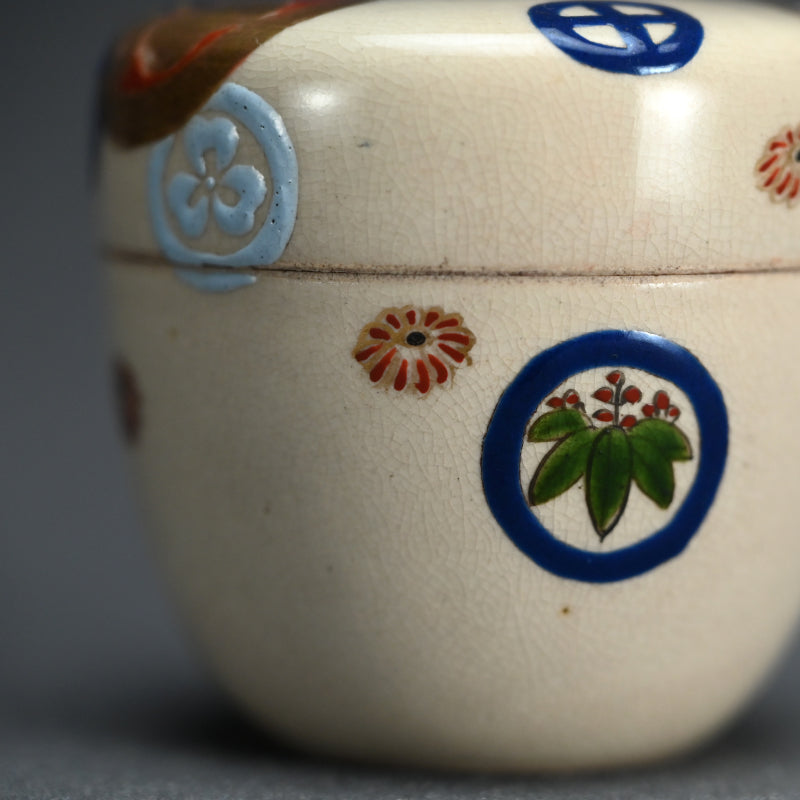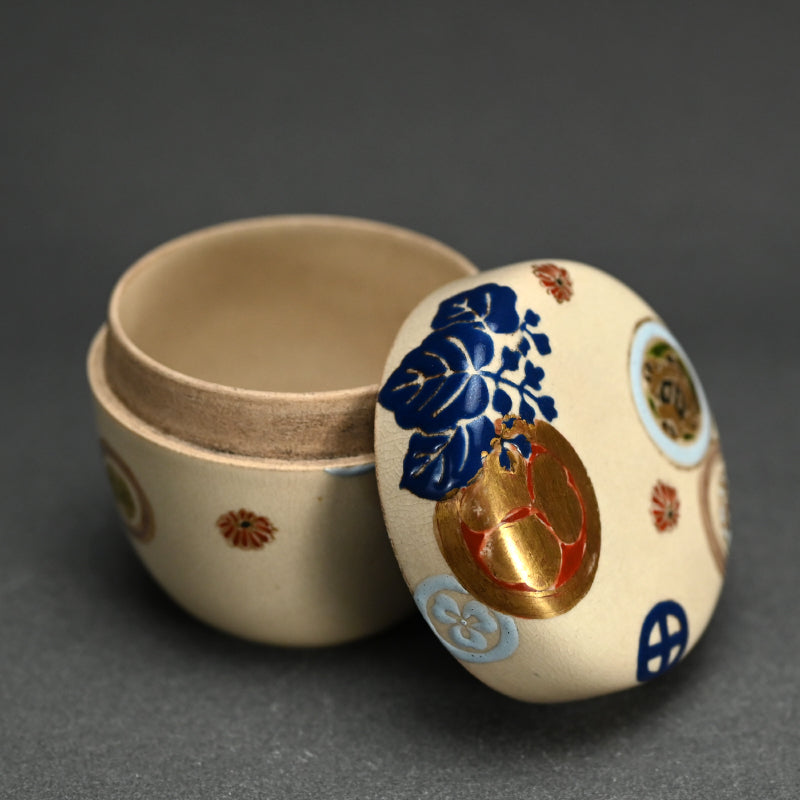Antique Japanese Satsuma Natsume Tea Caddy ー"古薩摩茶壺 暁山 造"
Antique Japanese Satsuma Natsume Tea Caddy ー"古薩摩茶壺 暁山 造"
Item Code: K574
Couldn't load pickup availability
Various family emblems and crests adorn this old Kyo-Satsuma Pottery tea container dating from the first half of the 20th century signed on the base Gyozan. It is of the soft colored pottery of Awata, in the East district of Kyoto, stylistically known as Kyo-Satsuma. The vessel is made to contain powdered Maccha Tea. It is 7 cm diameter, 6.6 cm tall and in perfect condition, enclosed in an old Kiri-wood box.
The "Gyōzan" kiln was first established in 1711 in Awata by Ichimonjiya. In 1805 the kiln received authorization to serve as a potter for Seiren'in-no-miya's Awataguchi Imperial Residence and was granted the name "Gyōzan."
When the original Gyōzan family ceased in 1877 (Meiji 10), the title "Gyōzan" was entrusted to Ōmiya Chōbee, who had a close relationship with the family. Since then, the tradition has been carried on as Okada Gyōzan.
Ōmiya Chōbee hailed from Ōmi (modern day Shiga prefecture) and established a kiln in Kiyomizu, Gojō. In 1798, he also started a ceramics wholesale business, adopting the trade name Ōmiya. During the Meiji period, our shop exhibited at events such as the Kyoto Exposition and the National Industrial Exposition. Internationally, we participated in numerous exhibitions to promote Kyōyaki (Kyoto ware), from the 1873 Vienna World's Fair (Meiji 6) to the 1924 Paris Exposition. After World War II, the 7th Gyōzan focused particularly on exports, spreading Gyōzan-branded Kyoto Satsuma ware internationally. In 1998, the 8th generation became head of the family.
Share






































